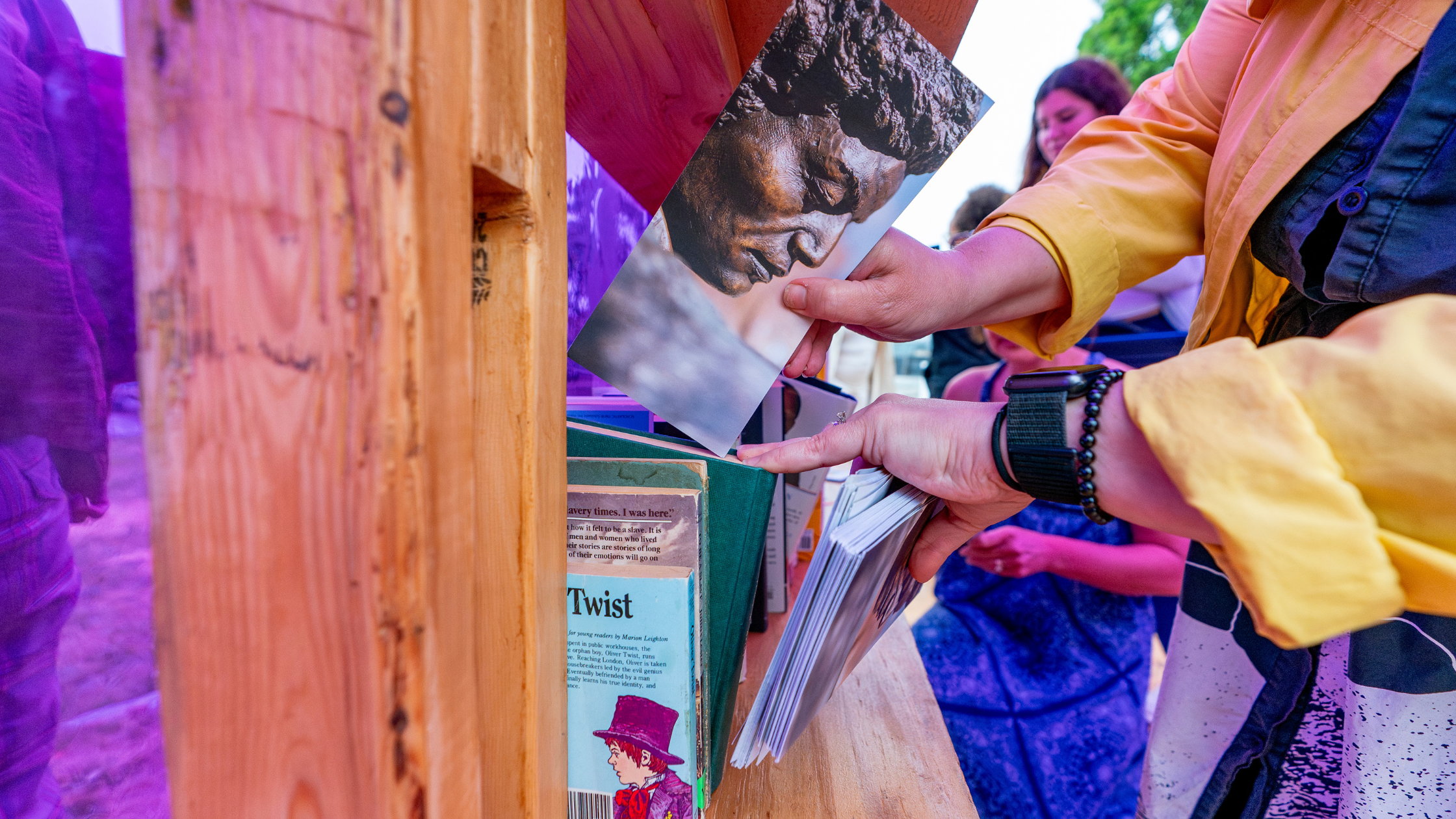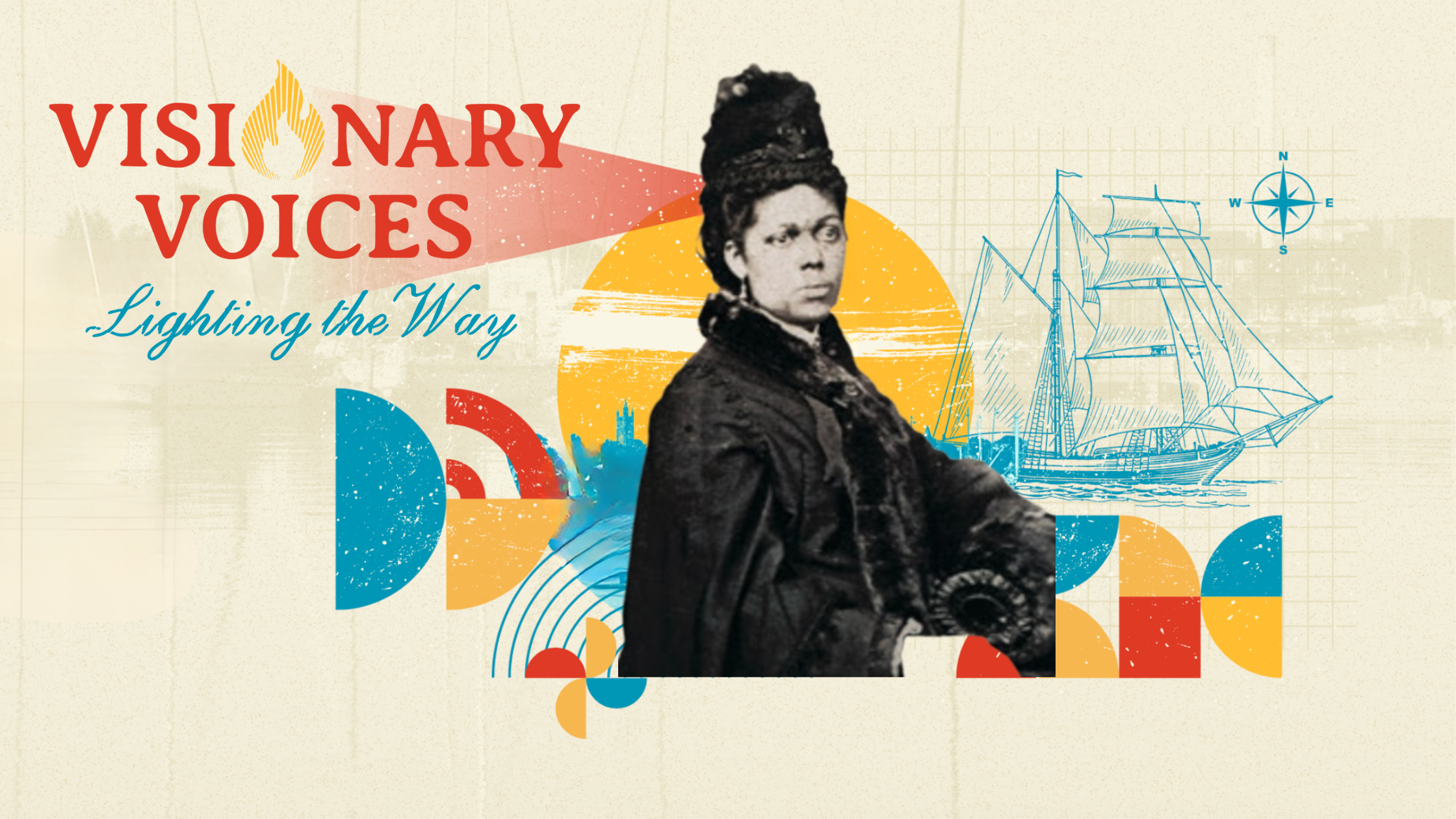New Bedford’s U.S. Custom House was designed by Robert Mills, the first internationally recognized architect born and trained in the United States.* Situated within the Whaling National Historical Park and Seaport Cultural District, the U.S. Custom House is a common sight for visiting and local pedestrians. The abutting Custom House Square is a public park and location for special events and occasions throughout the year such as live music, performance art, and holiday celebrations. In December of 2024, the exterior of the building was transformed visually into a giant snow globe by New Bedford artists Broken Glass Projection Mapping. The building stands out as a prominent landmark in the city’s visual landscape, yet its history and current functions remain largely unknown to the public.
The New Bedford U.S. Customs House, built between 1834 and 1836, was a key site in maritime trade history and is the country’s oldest continuously operating customs house. The structure was listed as a contributing building in the New Bedford Historic Landmark District in 1966 and became part of the New Bedford Whaling National Historical Park in 1996. Historically, whaling masters registered their ships and cargo here and protection papers were served to American seamen so as not to be conscripted by foreign governments and so that free men of color would not be enslaved in southern ports. Today, commercial fishing and cargo ships log their duties and tariffs. The main tenants currently at the building located at 37 North Second Street are the National Oceanic and Atmospheric Administration and U.S. Customs and Border Protection.
By 1825 New Bedford had become the world capital of the whaling industry, surpassing Nantucket. Its importance as a port city motivated the U.S. Congress to authorize the construction of a Custom House in 1832. The architect assigned the task of designing the building, Robert Mills, had also designed the U.S. Treasury Building and U.S. Patent Office in Washington D.C., along with three other U.S. Custom Houses in New England. He worked in the States under Irish architect James Hoban and helped him with his commission for the White House. Mills designed the nation’s first Washington Monument in Baltimore and won the competition for the design of the Washington Monument on the future Mall of the National Capital in D.C.
Of the custom houses designed by Mills, the New Bedford design was the largest and most elaborate. According to Mills, the building’s scale and endurance were to match New Bedford’s economic vitality. Each of the pillars of the facade weighs twenty tons. In Greek Revival Style, the building is exemplary of the modern public building style that standardized the design of federal buildings for years to come. Following an onslaught of fires in federal buildings, Mills adjusted the original plans of using brick with wood framing and opted for a solid masonry approach. The building remained intact and up to modern standards until 1958 when it was rendered structurally outdated and underwent extensive restoration in 1962. In 1970, it was listed in the National Register of Historic Places, recognized for its architectural significance as one of New England’s finest modest Greek Revival government buildings.
Learn more about this fascinating part of New Bedford’s history by visiting the Whaling National Historical Park Visitor Center across the street from the Custom House. The National Park Service offers guided and self-guided walking tours during warmer months.
*Though Charles Bulfinch is credited as the first professional architect born in the United States, he learned about architecture by travelling to Europe.



